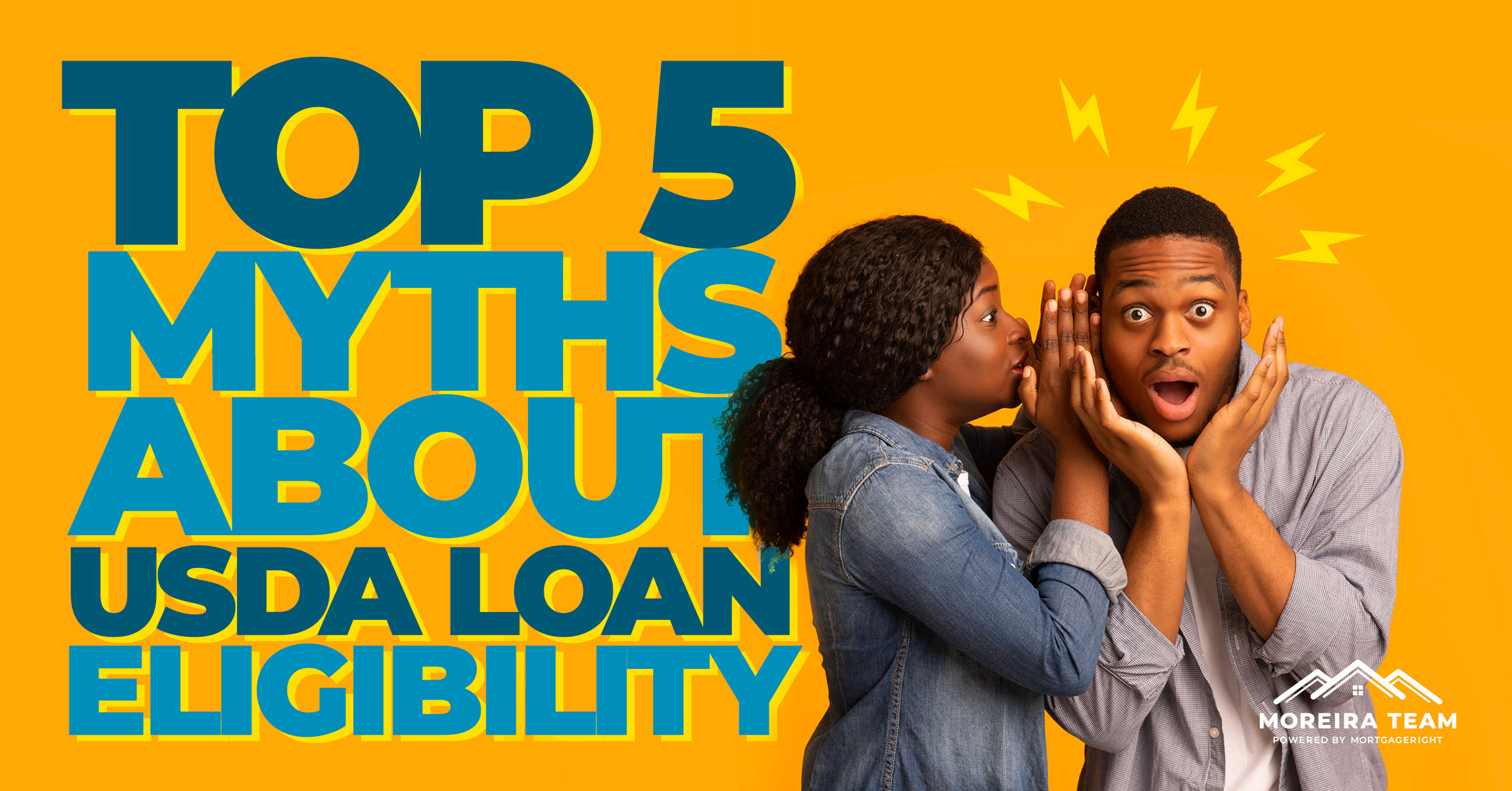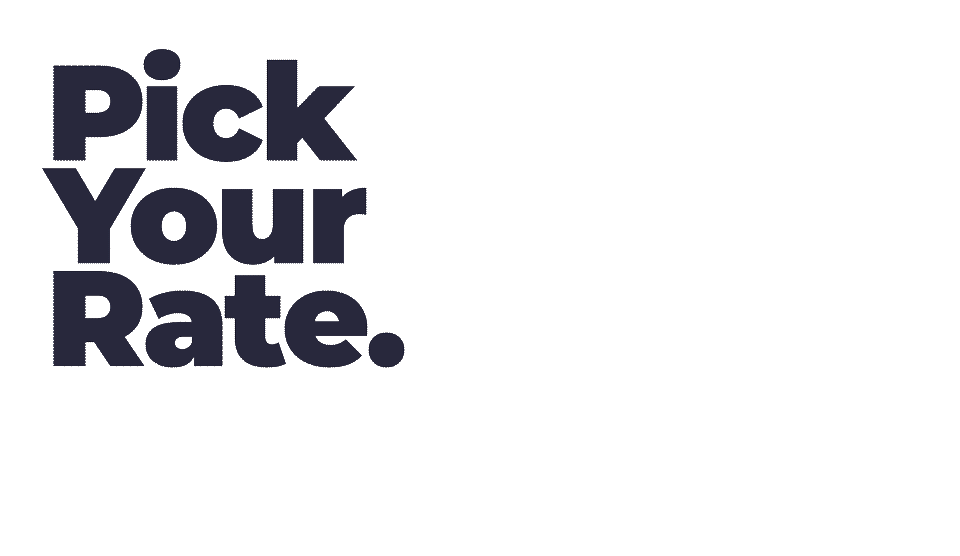
In this article
- Key Takeaways
- First Things First: What Is a USDA loan?
- Myth #1: USDA Loans Are Only for Rural, Remote Areas.
- Myth #2: You Have to Buy a Farm or Large Plot of Land.
- Myth #3: You Must Have a Low Income to Qualify
- Myth #4: USDA Loans Aren’t for First-Time Buyers.
- Myth #5: USDA Loan Limits Are Too Low for My Area.
- Could a 100% Loan Be the Key to Purchasing Your Dream Home?
Key Takeaways
- USDA loans offer 100% financing with no down payment.
- Many suburban areas qualify for USDA loans, debunking the myth that rural properties have to be remote.
- You don’t need to be a farmer or purchase a large property to take advantage of this loan.
- In many counties, USDA loans are available to moderate-income borrowers.
- The loan limits in 2024 may be higher than you expect, expanding eligibility to more properties.
Ralph Waldo Emerson said, “To be great is to be misunderstood.” Apparently that quote applies to home loans as well as to humans. A USDA loan is a great — actually, a fantastic — loan option that is often misunderstood, and therefore under-utilized by homebuyers. This loan seeks to open the door to home ownership in specific areas for borrowers who might not otherwise qualify for home loans.

Whether you are a first time homebuyer or an experienced home owner ready to take a new step, this loan could unlock the opportunity you need to purchase your future home. Unfortunately, misconceptions about this loan are common, and these misconceptions could prevent eligible borrowers from pursuing a potentially life-changing loan opportunity. The misconceptions sound something like this:
- Don’t I have to move to the boonies to qualify for a USDA loan?
- Isn’t this loan just for farmer and rancher types–you know, people who want to buy multiple acres?
- I make a middle-class salary—don’t I make too much to apply?
The answer to all those questions is not necessarily. Let’s clearly define a USDA loan and its purpose, then debunk five common myths surrounding this exciting mortgage opportunity.
First Things First: What Is a USDA loan?
USDA loans are government-backed mortgage loans that allow buyers with low to moderate income to purchase homes in rural areas. Because these loans cover 100% of a home’s purchase price, borrowers are not required to contribute a down payment—we’re talking zero dollars down. That’s an astounding opportunity. Thanks to inflation and a higher-than-ever cost of living, many Americans are struggling to make ends meet. The idea of saving thousands of dollars for a down payment feels intimidating, if not impossible. If you are hoping to find a 100% financing option for your mortgage, a USDA-backed loan is worth exploring.
But escaping the burden of a down payment is not the only advantage USDA borrowers enjoy. If you qualify, additional benefits include:
- The loan rate on your mortgage will be lower than the average rate, which amounts to significant savings over the life of your loan.
- You will probably have to pay PMI (Private Mortgage Insurance), but again, the rate will be better than the average rates most borrowers receive.
- Lengthy loan term options can keep your monthly payments low.
- Your credit doesn’t have to be perfect to qualify. Generally, you’ll qualify if your credit score is 620 or higher, though there are some exceptions.
All of these advantages make the USDA loan an attractive option worth investigating. But misinformation and misunderstanding have led some qualified homebuyers to assume these loans aren’t for them, which means they’re missing out on a great opportunity. Let’s examine five common myths so you can make an educated decision about whether or not you want to pursue this type of loan.
Myth #1: USDA Loans Are Only for Rural, Remote Areas.
The USDA loan was designed to assist with home purchases in less-developed areas that are technically designated as “rural,” but the USDA map’s definition of rural is fairly broad. You don’t have to move to the middle of nowhere to qualify for a USDA loan. You certainly can move to a remote area if the idea of living around more cows than people sets your soul free.
You’d be surprised by how many charming towns and suburban areas just outside larger cities are still USDA-eligible. The maps determining eligibility are only updated every 5 to 7 years, which means that some suburban areas that have experienced recent growth may still be classified as “rural.”
Myth #2: You Have to Buy a Farm or Large Plot of Land.
You’ll find plenty of single-family homes in USDA-approved areas. These homes fit normal lifestyle preferences: they’re designed for one family, and you don’t need a tractor or horse to make it from one side of your yard to the other.
Many USDA-eligible homes are in suburbs that are an easy drive from metropolitan areas. To identify qualifying areas and homes, explore the USDA map. By plugging in the zip code or city name, you can easily see which areas are eligible. And keep in mind: If you find a home you love in a USDA-eligible area, it’s smart to buy sooner rather than later. The next time the maps are redrawn, it’s possible the boundary lines will move, and your desired home will no longer qualify.
Myth #3: You Must Have a Low Income to Qualify
One beautiful purpose behind the USDA loan is that it opens doors to home ownership to lower-income borrowers who might not otherwise qualify for a conventional loan. However, these loans are not just for low-income candidates; many households with moderate incomes are still eligible. The government defines “moderate income” as “greater than 115% of the U.S. median family income, or 115% of the average of the statewide and state non-metro median family incomes.” We know, that sounds like more complicated math than you’ve done since high school algebra–so here’s a handy chart delineating the income limits for every eligible county in the U.S. It also lists the limits for different household sizes.
Let’s talk about real income numbers for an actual town: Say you’d like to purchase a single-family home in the charming Southern gem of Thomasville, Georgia. Thomasville is so delightful you may never want to leave, but if you do choose to go exploring, you’re not far from cities like Valdosta, Georgia and Tallahassee, Florida. In Thomasville, a household consisting of 1-4 people would qualify for a USDA loan with an income below $112,450. A household of 5-8 members would qualify as long as the household income is under $148,450. As you can see, the USDA income limits are flexible enough that many borrowers who earn a middle-class salary would still qualify.
Myth #4: USDA Loans Aren’t for First-Time Buyers.
It doesn’t matter if you’ve never owned a home before, or if you’ve owned several homes over the years. As long as you’re trying to purchase an eligible property, and your income qualifies, you can apply for a USDA-backed loan. These mortgage loans are great options for first-time and repeat buyers.
Myth #5: USDA Loan Limits Are Too Low for My Area.
If you’re worried that the home you’re interested in buying is too expensive to qualify for a USDA loan, you may be worried for nothing. The 2024 conforming loan limits set the baseline loan limit to $766,550. If you’re looking to buy in an eligible high-cost area (like Alaska, Hawaii, the U.S. Virgin Islands, and Guam), the limit can go up to $1,149,825. Unless you hope to buy a luxury home, your desired loan amount will most likely fall within the limits.
Could a 100% Loan Be the Key to Purchasing Your Dream Home?
Contact the mortgage professionals at Moreira, and let’s explore your loan options together. We love helping our clients enjoy life in homes they love, with more money in their bank accounts. Why wait? Find out if USDA loans are right for you today.




